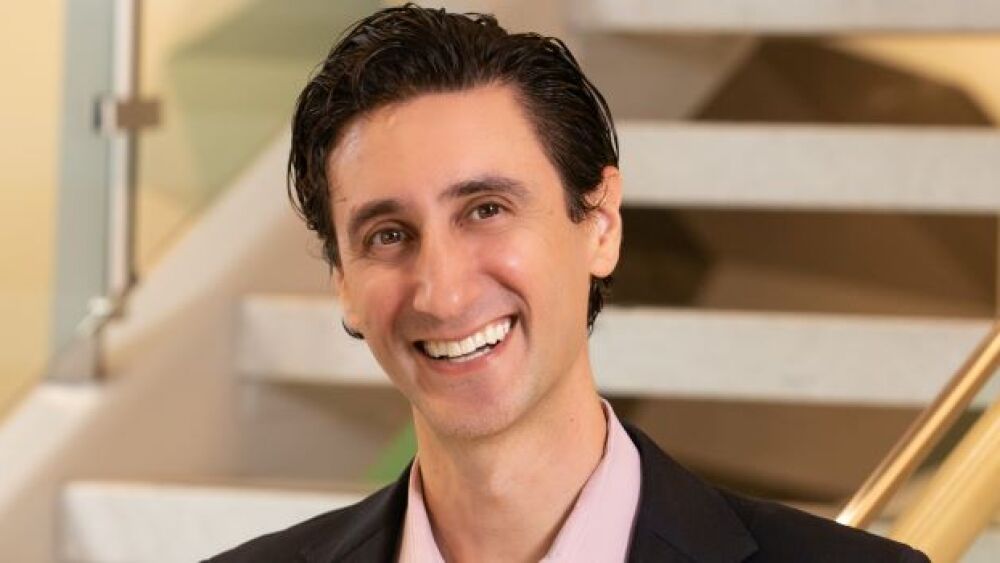Long-term, opportunities may include using the platform as a vehicle for combination therapies from assets developed by multiple companies.
Cartesian President and CEO Murat Kalayoglu, M.D., Ph.D./Courtesy Cartesian Therapeutics
Cartesian Therapeutics is developing non-permanent cell therapies that can be used soon after diagnosis and address a wide range of diseases beyond cancer. The biotech’s approach to cell engineering relies upon RNA rather than DNA to effect changes within the cells.
The benefit, Cartesian President and CEO Murat Kalayoglu, M.D., Ph.D. told BioSpace, is that “our RNA approach, compared to a traditional DNA modification, offers an order of magnitude greater control over the therapeutic product and what happens when those cells are in the body.” A high level of control is important if cell therapy is to be used in the treatment of either front-line cancer or in indications where the choice isn’t between life and death.
“RNA has a measurable half-life,” Kalayoglu explained, so cell therapies driven by RNA aren’t permanent. “The cells can’t proliferate out of control.” Consequently, Cartesian can develop cell therapy for newly diagnosed populations and for autoimmune, respiratory and inflammatory diseases, for example.
In contrast, conventional cell therapy involves engineered DNA, which makes a permanent change in the cell, he pointed out. “When it is infused back into the patient and encounters its target, it proliferates and can lead to toxicities. For example, conventionally modified CAR-T therapies may proliferate so much they create cytokine release syndrome or neurotoxicity. Also, the cells may persist a very long time, increasing the risk of infection or transformation.” Those risks are acceptable in life and death situations, but generally not acceptable in less dire situations.
Cartesian’s technology is known as the RNA Armory℠. “Basically, with this platform, we’re using the cell as a factory and also as the vehicle to deliver RNA therapies directly to the targeted diseased tissue. It gives us the opportunity to engineer multiple RNA therapeutics into one cell type,” Kalayoglu said.
The specific mechanism behind the RNA Armory℠ is proprietary, but he said it enables tens to hundreds of billions of viable, highly-functional cells to be manufactured in a given production run. That’s important because adoptive cell therapy requires cells to be dosed into patients over time since the duration of therapy is finite. Conventional cell therapy, in contrast, relies on the cells to proliferate inside the body, often for a once-and-done therapy.
Cartesian has three programs in clinical development. The furthest along, Descartes-08, targets generalized myasthenia gravis, an autoimmune disease. It’s composed of autologous CD8+ T-cells engineered with RNA-encoding chimeric antigen receptors (CARs) that bind B-cell maturation antigen (BCMA). The goal is to kill the plasma cell clones that produce the pathogenic autoantibodies. Earlier work showed a good safety profile and significant clinical improvements in patients after only a short duration of therapy. “There’s a real opportunity to make a significant impact on the disease,” Kalayoglu said.
Likewise, Descartes-30 targets the web of inflammatory proteins known as neutrophil extracellular traps (NETs) that mediate ARDS. As yet, NETs are not addressed by any approved medications. “Neutrophils try to control infections by putting out ‘spiderwebs’ of NETs designed to capture virus particles and bacteria, but NETs also cause inflammation,” Kalayoglu explained. “That can become too much of a good thing, so Descartes-30 secretes two proteins that degrade NETs synergistically.”
Descartes-30, is being used to treat acute respiratory distress syndrome (ARDS). Unlike Cartesian’s other programs, this one uses mesenchymal stem cells rather than T cells and is being developed as an allogeneic, off-the-shelf therapy. As such, it may have applications in treating COVID-19 patients and other NET-related diseases.
The remaining clinical program, Descartes-11, is being used to treat patients with multiple myeloma. It’s currently enrolling participants in a Phase II clinical trial.
Each of these programs is based on the RNA Armory℠ platform. That platform was developed for the company’s own therapeutic pipeline, but Kalayoglu said he anticipates opportunities for out-licensing and partnerships. “We’ll let clinical data drive those decisions.”
Long-term, opportunities may include using the platform as a vehicle for combination therapies from assets developed by multiple companies. Using this platform, he suggested combination therapies may be able to be tested together, simultaneously, rather than developed independently and then combined and tested. “The latter is very capital- and time-intensive, requiring three to five years and tens of millions of dollars, just to learn whether the combination works synergistically,” Kalayoglu pointed out.
“With RNA Armory℠, we can engineer those combination drugs directly into a cell, using the cell as a factory for producing those products and also as a vehicle to deliver them to the site of disease. That’s the future of cell therapy: combinations,” Kalayoglu said.
There are some limitations, of course, in terms of the number of potential therapeutic combinations. He also acknowledged the usual safety concerns, “which are amplified as you engineer additional therapeutics.”
Nearly a year ago, researchers from Houston Methodist Research Institute indicated that RNA therapeutics “will actualize personalized medicine, and will make the term ‘undruggable’ obsolete,” they wrote in Frontiers in Bioengineering and Biotechnology.
“RNA cell therapy is a nascent field,” Kalayoglu pointed out, where opportunities abound. Most of the work in this specific area tends to be conducted in academic centers. “I hope others will follow our lead,” and go beyond oncology, using adoptive cell therapy to treat a variety of indications.






